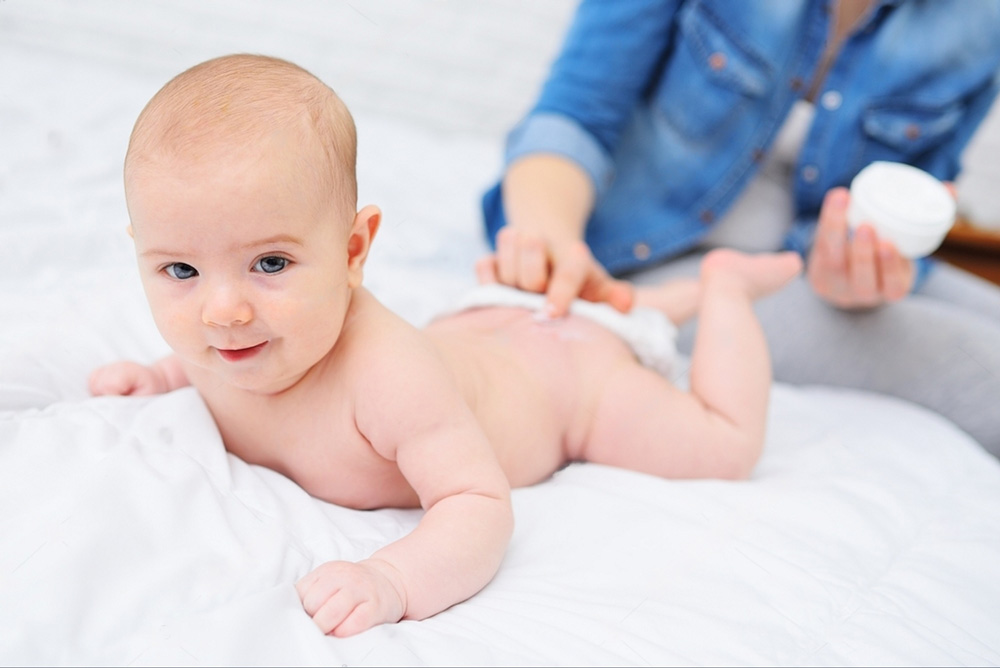
Preventing diaper rash: caring for your baby’s delicate skin
Whether you're expecting or already caring for your baby, diaper rash is likely a familiar concern. There's plenty of advice on dealing with it, but what actually causes diaper rash? More importantly, how can you prevent it? The best approach is to stop diaper rash before it starts. Prevention is crucial, and we're here to guide you. But first, let's understand your baby's skin.
How is your baby’s skin different from yours?
Baby skin is known for its softness, perfect for cuddling. However, it's also quite sensitive and more prone to rashes, infections, acne, and blemishes compared to adult skin. Understanding your baby's skin is the first step in caring for it. Here's a quick guide:
- Higher permeability: Baby skin allows substances to pass through more easily, including ingredients in baby products.
- Moisture retention: Baby skin doesn't retain moisture as well, making it drier than you might expect.
- pH levels: Baby skin has a less acidic pH, making it more susceptible to infections.
- Melanin levels: With less melanin, baby skin is more sensitive to the sun's UV rays.
- Temperature regulation: Babies can't regulate their body temperature well, so their skin is more affected by environmental temperatures.
Understanding these differences can help you better protect and nurture your baby's sensitive skin.
How to prevent diaper rash
As a new parent, diaper rash can be an unexpected and unpleasant surprise. Characterized by bright red patches on your baby’s sensitive areas, it can be alarming and uncomfortable for your little one. Various factors can cause diaper rash, including:
- Infrequent diaper changes
- Reaction to a new product
- Tight diapers or clothing
- Bacterial infection
- The introduction of new foods
- Use of antibiotics
To help prevent diaper rash, consider these proactive steps:
- Let your baby go diaper-free: Allowing your baby to go without a diaper helps their skin dry out completely after a change.
- Change diapers often: Keeping your baby’s skin dry by changing diapers frequently is one of the best ways to prevent diaper rash.
- Rinse with warm water: A quick rinse with warm water can keep your baby’s skin clean. Ensure the skin is dry before putting on a new diaper.
- Pat dry, don’t rub: Patting the skin dry is less likely to cause irritation than rubbing.
- Avoid tight diapers: Tight diapers can restrict airflow and cause chafing, so ensure they are snug but not too tight.
- Use ointment: Applying a protective layer of ointment can create a moisture barrier if your baby is prone to diaper rash.
- Keep your hands clean: Washing your hands before and after changing diapers reduces bacterial exposure for both you and your baby.
- Consult your doctor: If diaper rash persists or occurs frequently, seek advice from your doctor.
Common misconceptions about diaper rash
- Diapers cause the rash: The frequency of diaper changes and moisture levels are more significant factors than whether you use cloth or disposable diapers.
- Wipes irritate the skin: While baby wipes can sometimes cause reactions, it’s essential to check the ingredients and choose wipes suitable for your baby’s skin.
- Powder helps: Modern advice suggests avoiding powders, as they can be inhaled and irritate your baby’s lungs.
Despite your best efforts, diaper rash is almost inevitable at some point. The best approach is to follow prevention tips, use common sense, and share experiences with other parents for support.
